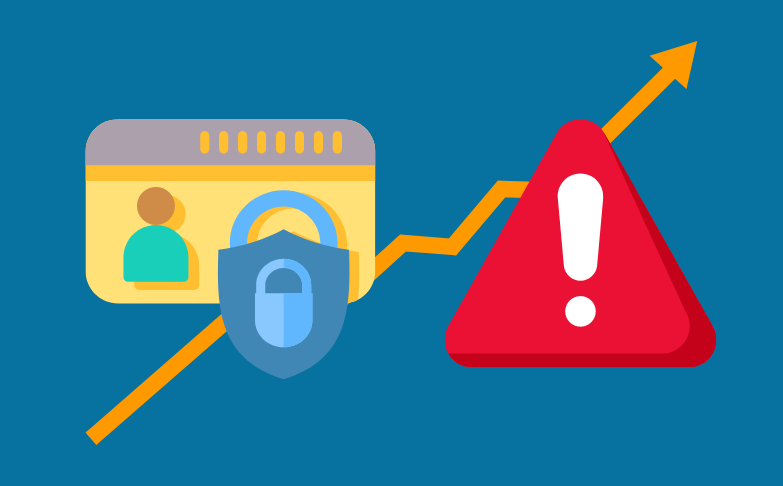Loan fraud is poised to reach new heights in the coming months – lenders take note Published September 3, 2024
In the last few years, with economic conditions in flux, many turned to fraudulent methods to secure financing for their business — and based on how things are going, banks and lenders should prepare for it to get worse in the months ahead.
Between sky-high inflation, layoffs making headlines, and general consumer malaise, many Americans are hurting financially, and their businesses are along with them. The end of 2023 saw the highest rate of small business bankruptcies since the pandemic’s peak. What’s more, inflation rates are harrowing for most small business owners. Even those doing well struggle to access working capital— last year, only 47% of SMBs with annual revenues of $10 million or less had access to financing.
Government-subsidized programs from the COVID era have dried up, leaving many small businesses needing a cushion for the harder times at hand. All of these conditions create a perfect storm for numerous types of fraud to be on the rise.
A post-pandemic boom
Americans are probably most familiar with the business financing fraud that has made headlines. A good example is the aforementioned COVID-era small business capital programs, including the often maligned Paycheck Protection Program. While it was essential for the government to step in and prop up floundering businesses, a failure in the process made the program easy pickings for fraudsters. The latest, most complete assessment of potential fraud from the COVID days suggests at least $200 billion in government money may have gone to scammers amidst national turmoil.
But following that economic crisis in 2020, loan fraud has continued to rise nationwide.
A particularly volatile sector of the lending industry, small business lending, has seen troubling spikes. A 2023 survey of small business lenders indicated a 14.5% increase in lending fraud year-over-year, surpassing the 6.9% recorded in 2021. And as we look ahead, almost three-quarters of respondents anticipate this issue to grow in the upcoming year.
Not all fraud is created equal
Small business loan fraud is a complex issue. Most common in these cases are instances of first-party fraud. First-party fraud happens when someone stretches the truth and misleads a bank and lender about their financial condition. This isn’t the dramatic scenario of the phishing email sent from overseas, or the CIA-Amazon-shoe-box con that went viral recently. These are everyday business owners fudging the numbers, falsifying documents, or using misleading data to secure capital through otherwise official channels.
Even though we’re past the immediate downturn caused by COVID-19, people are still carrying out this kind of fraud in stunning amounts, too. As recently as November, charges were announced against a North Carolina business owner accused of orchestrating a fraudulent business loan scheme. The man in question owned an oral surgery practice and a real estate development company and allegedly sought funding for both enterprises through fraudulent means. The indictment alleges that from August 2018 to November 2021, he submitted a falsified small business loan application containing fabricated information about his business and financial health, taxes, and outstanding tax debts. The application even contained a falsified document, purportedly an IRS letter, asserting that the individual was on an IRS payment plan.
The loan was approved, and the result: he obtained over $3 million via an SBA-backed loan.
What are lenders to do?
The path forward is a complicated one. Fraud detection for small businesses is not easy. The data lenders work with is often fragmented and complex. There are limited sources of truth available about a company’s financial state. Small businesses are likely to have thinner credit files than other larger enterprises, and whether it’s a big national bank or a small community lender, everyone involved is carefully balancing risk and reward.
Another complication here is that many might turn to first-party fraud because securing a small business loan is a complicated, often hit-or-miss process. There’s a difference between those who lie for a loan without the intention of paying it back, and those who need to stretch the truth to secure actual capital for their business.
For lenders, vigilance will be the name of the game when it comes to tempering future fraud. Funders should adopt a trust, but verify, mindset. Every bit of information you receive in this fragile lending environment should be verified against an ultimate source of truth, a central database like the IRS. IRS records reveal any hidden red flags and confirm borrower-provided data. It can verify borrower income, tax compliance, and validate the existence of an IRS payment plan – something that might have stopped that North Carolina dentist.
Not convinced now is the time to take precautions? The IRS announced earlier this year it will ramp up its collections efforts, meaning more small businesses will be feeling the heat and might be tempted to stretch the truth to make ends meet. These cases of fraud will likely become increasingly common— and for lenders, it’s a matter of getting smarter and expanding due diligence before it becomes a problem for you, too.

